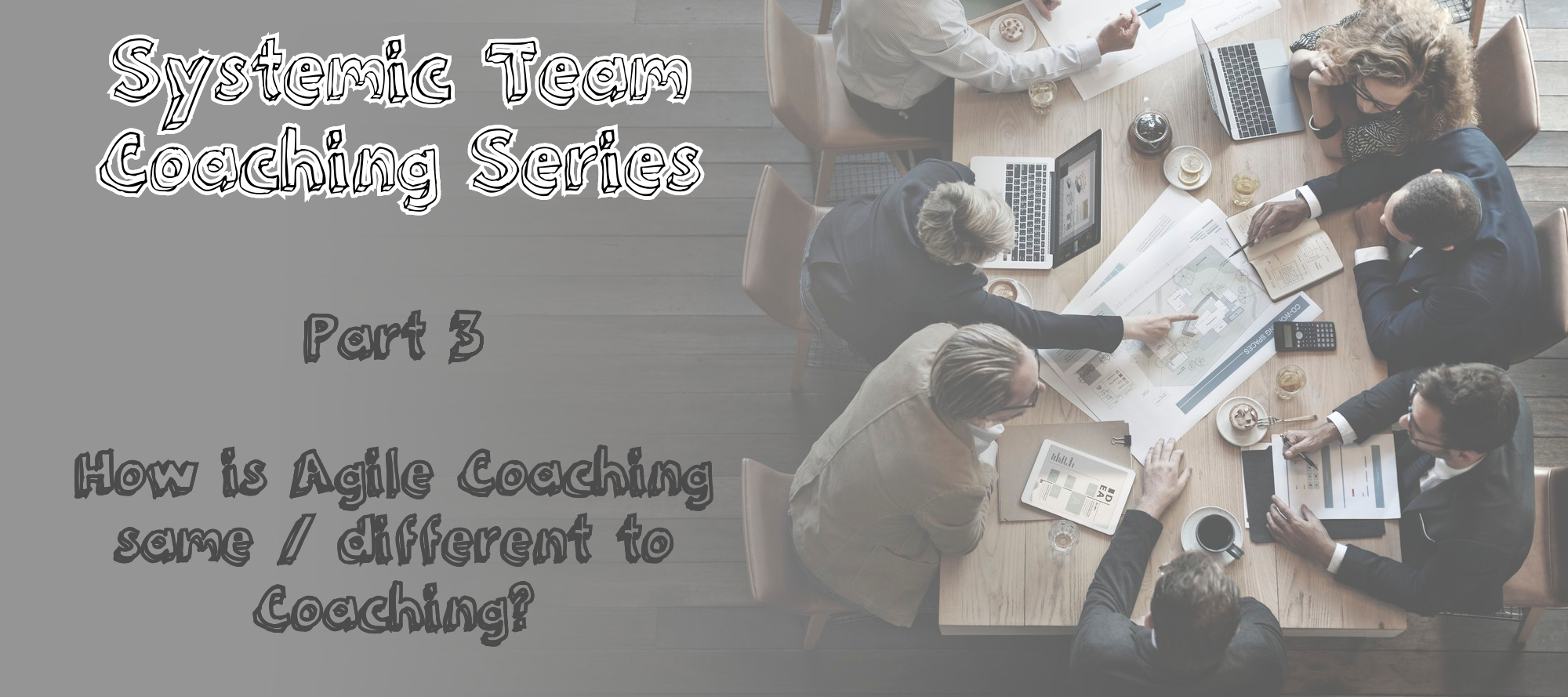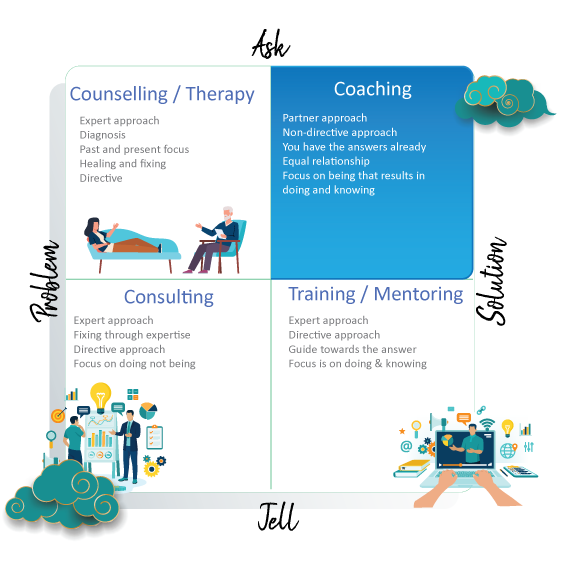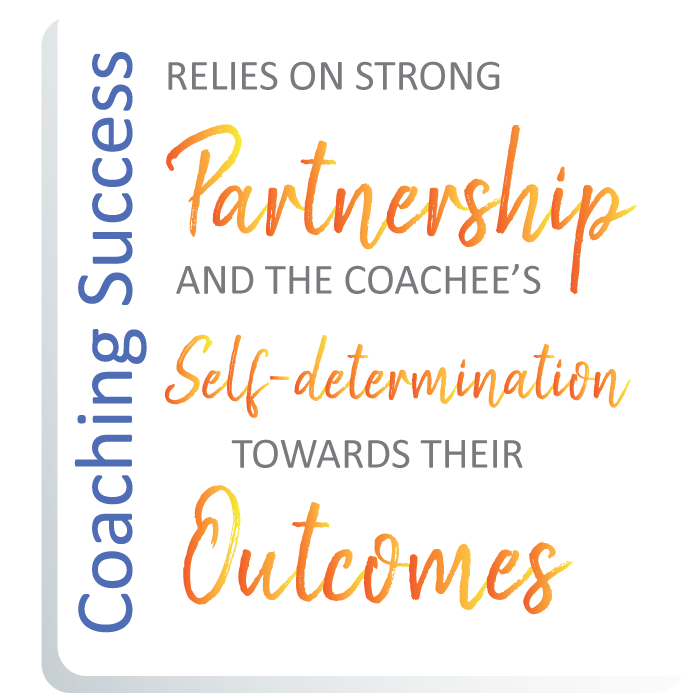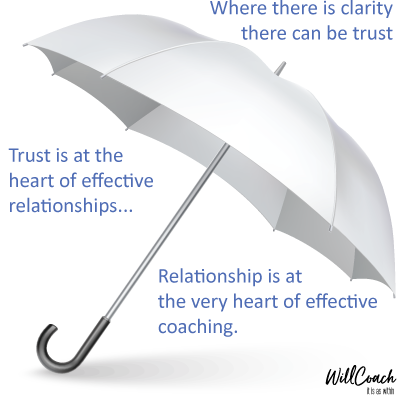


Agile Coaching takes a partnering approach to everything. There is neither fixing, nor telling – there is asking, inviting and unfolding.
Agile coaching draws on the above statements to orientate the “WAY OF BEING” of the Agile coach in orientation to their clients[1]. Just like Coaches, Agile Coaches believe that their clients, their teams, the leaders and systems they work with, don’t need fixing, don’t need advice and don’t need to be directed.
Agile coaches always operate from a stance of being a coach and they partner with their clients to leave the coaching stance and embody one of the below stances:
- Facilitation
- Mentoring
- Training
Notice that the advice-giving consultant role, the fixing and telling part of the expert Agilist rescuing everyone is NOT on the list.
Above we mentioned that in Coaching, partnering is an important skill. In Agile Coaching, everything is conducted through partnering and is a core competency you must master to be effective as an Agile Coach.
Agile Coaching allows you to partner with your client when you suspect that they might need more information on a tool, method, process, role, framework or “how to” – then you can move into the training role, or the mentoring role.
Agile Coaching also allows you to move into the Facilitation of conversations, meetings, workshops and large events.
Each one of these roles are always brought back to coaching by checking with the client if this was useful, and if it served their needs. There is a difference between being helpful and being useful.
We are not here to help anyone[2] – they can help themselves, but we are here to offer information, questions, facilitation, observations, mentoring and coaching that is useful to them as they work towards helping themselves reach their outcome. They do the work of transforming their leadership, teams, co-ordination level or enterprise![3]
Another key part that Scrum Masters often struggle with in the agile Coaching stance is to be NEUTRAL. This is crucial for Agile Coaching (Moore et al. (2016) & Adkins (2016) and Facilitating[4].
As Scrum Masters we are taught to always protect the team. This means you are not neutral, and are schooled to develop a strong bias against anything that threatens the team. Over time, without vigilance and awareness on behalf of the Scrum Master, the team learns to depend on this and relegates their obligation to effectively engage with the system to the Scrum Master – and the Scrum Master is not able to act neutrally.
As an Agile Coach, or Coach in general, part of the stance is to ensure the hygiene of your practice. This includes being transparent, acting ethically, being clear when conflicts of interest arise, ending the coaching relationship when it no longer serves the client or when you cannot serve them because you are biased. It is therefore important for coaches to self-reflect and embark on continuous learning and development as well.
Know that the biggest difference between Coaching and Agile Coaching is that in professional coaching, we never step into consulting, mentoring or training. The rest is pretty much the same.
[1] Adkins, L. (2010). Coaching Agile Teams: a companion for scrum masters agile coaches and project managers in transition. Addison-Wesley
[2] Whittington, J. (2020). Systemic coaching & constellations: the principles practices and application of individual teams and groups (3rd ed). Kogan Page
[3] Madore, M., & Spayd, M. (2020). Agile Transformation: Using the integral agile transformation framework to think and lead differently. Addison-Wessley
[4] Acker, M. (2021). The art and science of facilitation: How to lead effective collaboration with agile teams. Fishpond
Since its inception, there has been an explosion of different types of coaching. Up until today, the international coaching industry cannot agree on a singular definition of coaching[1], and it is still moving into a space of standardisation and regulation of its practices.
At the same time, there is also an ever-growing exploration of how other frameworks, methods, and schools of thought tie into the general understanding of coaching and how it can be applied[2].
There is an argument in industry, including Agile Coaching, on whether we need to differentiate between types of coaching and coaching frameworks.
Types of coaching might include Executive Coaching, Leadership coaching, Team coaching, Group coaching and Systemic coaching, Performance coaching, Sports Coaching. While frameworks might include Integral coaching, Psychodynamic coaching, Solutions focused coaching, Ontological coaching, Gestalt Coaching, Existential coaching, Enneagram coaching, Neuro-Agility Coaching and so forth.
And in-between there are arguments that there is a scale of coaching from goals to existential orientation[3].
Now let’s see how it related to your work as Agile Coach:

| Goals / Skills | Performance | Behahaviour | Existential |
|---|---|---|---|
| Team Level | Team and mid-level leader | Value Stream, Team of Teams or divisional level | Leader and Enterprise Level |
| Teams need to execute repeatable and linear sequences to reach specific outcomes or goals. When they struggle, your focus is on Solutions coaching orientation for example, to help them create a way to reach the outcome | Teams and Multiple teams working together need to relate to one another and together, perform better together to reach outcomes and targets. Performance starts to introduce the relationships between teams and programs and how they perform together | These levels and leaders deal with a certain level of abstraction because they are slightly removed from the active doing of the work. Their work is working on the systems and relationships between teams, roles etc. Their behaviour and the collective behaviour of the program is the determining factor for the successful outcome | Leaders need to inhabit different ways of being, not doing, in order to lead effectively. Being informs thinking, feeling, saying and doing. Existential coaching deals with what is unseen, what lies beneath the surface of behaviour / what lies inside the system. Enterprise level is a very big abstract concept. We cannot possibly all know the full extent of everything that is the enterprise, every thought, action, goal, decision… so to deal with this enormity, we look at existential approaches |
[1] Stout-Rostron, S. (2014). Leadership coaching for results: Cutting edge practices for coach and client. Knowres Publishing
[2] Passmore, J., Peterson, D. B., & Freire, T. (2013). The Willey-Blackwell handbook of psychology of coaching and mentoring. John Willey & Sons
[3] Leary-Joyce, J. (2014). The fertile void: Gestalt coaching at work. AOEC.
AWA Adventures with Agile Enterprise Agile Coaching: Coaching Agile Transitions handbook (2021)


Here we then understand systemic coaching to come in where you are starting to deal with more than one entity, in relation to another. As Agile Coach, you do not focus coaching efforts on individuals very often, if at all. Your focus is mainly on teams (comprising of several individuals, roles, expectations, assumptions, and goals), team-of-teams (comprised of several teams, leaders, roles and the same) and everything in-between.
As Agile Coach, even when you are coaching a leader or a Scrum Master in a tight spot, you are coaching and seeing, listening for, and speaking to the system behind them[1], the relationships they have formed with others in their perception, and how it influences the teams, programs and roles they interact with.
Your focus is therefore always in a range from goal orientation to, at least, behaviour orientation on the scale. As a coach, regardless of the level you operate in, you are encouraged to be curious about your coaching stance from an existential level – what am I seeing, hearing, sensing, feeling, resisting, wanting, hoping and where am I feeling it in my body, how is it manifesting in my face, in my voice, in my muscles, how I walk etc?
Now, let’s explore the different types of coaching and how they relate to Agile Coaching across goals, performance and behaviour domains.
[1] Whittington, J. (2020). Systemic coaching & constellations: the principles practices and application of individual teams and groups (3rd ed). Kogan Page
